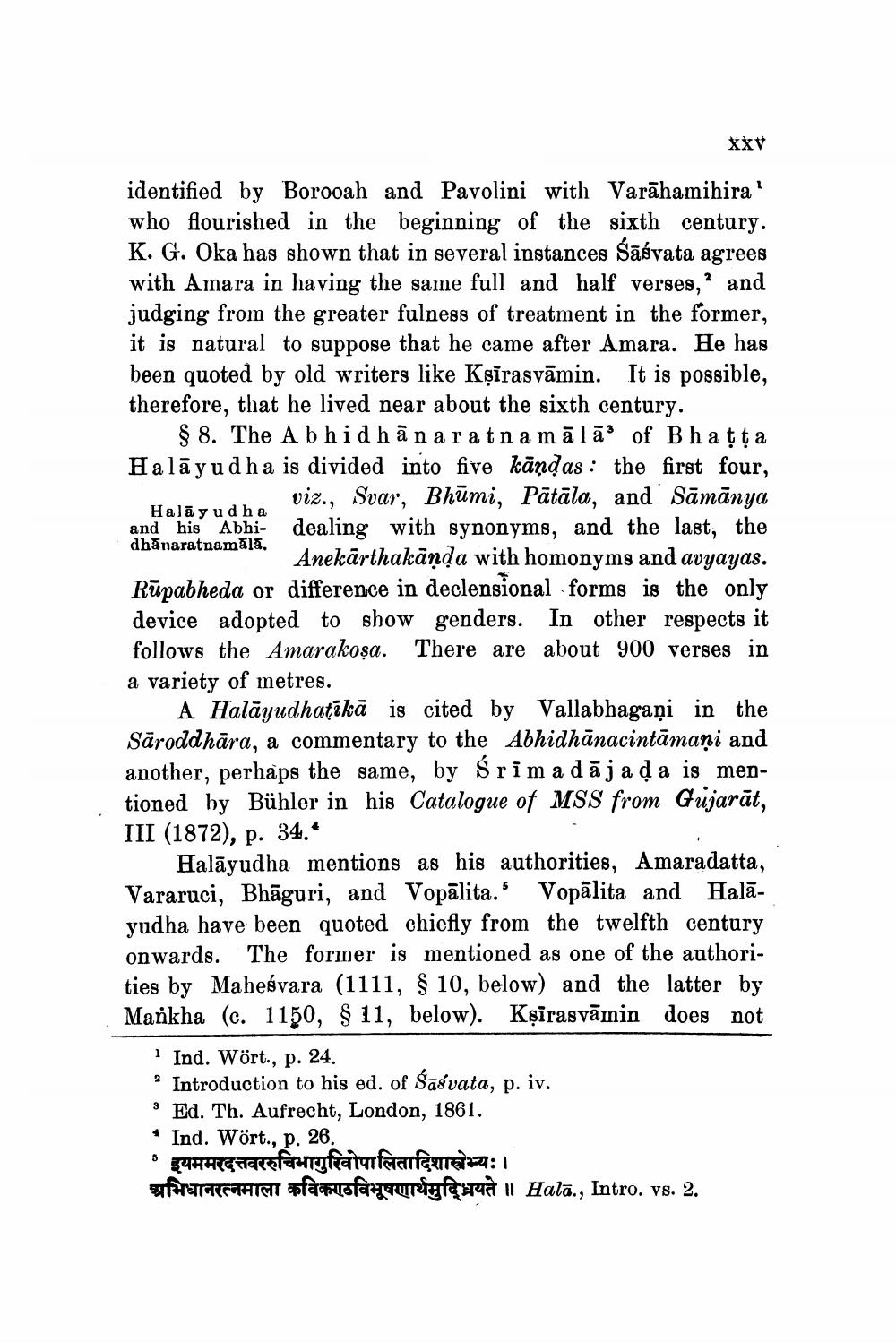________________
XXV
identified by Borooah and Pavolini with Varāhamihira' who flourished in the beginning of the sixth century. K. G. Oka has shown that in several instances śāśvata agrees with Amara in having the same full and half verses,' and judging from the greater fulness of treatment in the former, it is natural to suppose that he came after Amara. He has been quoted by old writers like Kșirasvāmin. It is possible, therefore, that he lived near about the sixth century.
$ 8. The A bhid hāna ratna mālās of Bhatta Halāyudha is divided into five kāņdas: the first four,
viz., Svar, Bhūmi, Pātāla, and Sāmānya Halā y udha and his Abhi- dealing with synonyms, and the last, the dhānaratnamāla.
14. Anekārthakānda with homonyms and avyayas. Rūpabheda or difference in declensional forms is the only device adopted to show genders. In other respects it follows the Amarakoșa. There are about 900 verses in a variety of metres.
A Halāyudhatīkā is cited by Vallabhagaṇi in the Sāroddhāra, a commentary to the Abhidhānacintāmaņi and another, perhaps the same, by Śrima dāja da is mentioned by Bühler in his Catalogue of MSS from Gujarāt, III (1872), p. 34.
Halāyudha mentions as his authorities, Amaradatta, Vararuci, Bhāguri, and Vopālita. Vopālita and Halāyudha have been quoted chiefly from the twelfth century onwards. The former is mentioned as one of the authorities by Maheśvara (1111, § 10, below) and the latter by Mankha (c. 1150, $ 11, below). Kșirasvāmin does not
| Ind. Wört., p. 24. * Introduction to his ed. of Sasvata, p. iv.
Ed. Th. Aufrecht, London, 1861. * Ind. Wört., p. 26. • इयममरदत्तवररुचिभागुरिवोपालितादिशास्त्रेभ्यः।
forama ratat famousfacerurturcarat i Halā., Intro. vs. 2.




